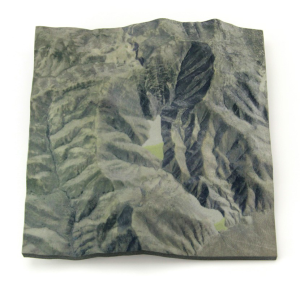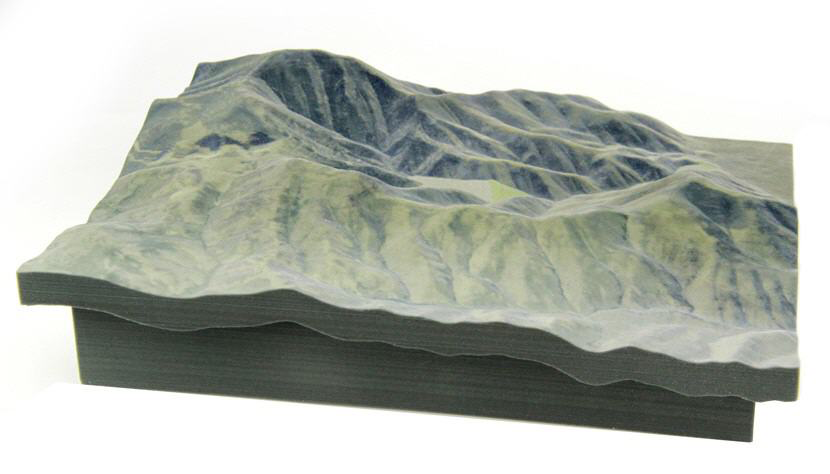MineBridge Software teamed up with 3D printing service provider Whiteclouds to 3D print a three dimensional full color topographic model generated with their new Muck3D software. The section of the northern Nevada terrain was printed on a 3D Systems ProJet 660Pro and generated from 2D aerial photographs.
As mining becomes more controversial – especially in the US – mining companies have to be more careful with their chosen mine sites. They need to be aware of any environmental impacts their mining operations may cause, the placement of building and structures on the site, and they need to be able to plan for the storage or removal of surplus waste material. Typically stakeholders use aerial pictures taken from airplanes, or more recently drones, to plan out their mine-sites but that doesn’t always show the complete picture. That’s where Canadian based MineBridge Software’s new mining modelling and visualisation software comes in.
The Muck3D visualisation software package generates surfaces from survey data and geo-referenced aerial pictures that can be converted into a 3D printable topographic model in natural-scale, ie without any modelling or enhancement. For the Nevada site, MineBridge created standard dam designs and then used the Muck3D software to create the full colour model.
Here is a very dry but still interesting demonstration video of the software process:
“It’s not always apparent from looking at a drawing how mine waste facilities integrate with their surrounding environment,” explains MineBridge’s Carlo Cooper. “By using 3D printed models, it’s easier for stakeholders to see the visual impact of these structures.”

Both companies said that they were quite pleased with the result and are already using the model to help stakeholders visualise unique terrain and geological details that are difficult to see using 2D pictures. Currently MineBridge and Whiteclouds are seeking out other mining operations and planning out new 3D prints of those areas.




